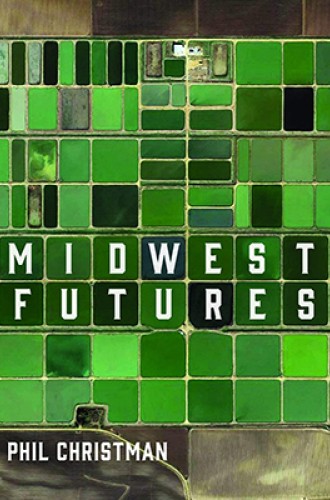Is Tennessee in the Midwest? Phil Christman’s wild ride through the region’s past, present, and future includes a reflection on what we could possibly mean by the term itself. Which west is it in the midst of? Whose west defined the term? One of the writers who first claimed the expression truly did mean Tennessee.
It took awhile, Christman writes, but by the early 1900s, Midwest came to mean what it means now: “a huge, vague region stretching from somewhere around Buffalo or Pittsburgh to the Great Plains-Except-Probably-Not-Montana-or-Wyoming-Sorry.” As a term, Midwest could not be more imprecise or strange. But what about the region?
It is, Christman says, a region rife with stereotypes about normalcy, niceness, heartlands, and mediocrity. It also carries a great deal of American ideology about the frontier, native peoples, and the meanings and opportunities carried by land. The Midwest is a place in crisis—economic, cultural, ecological—a crisis it has yet to face in any substantial way.
Christman’s purpose, however, is not to give an analysis of the Midwest or an account of its history. His purpose is affective: he wants you to feel it. Christman reflects on a lingering feeling evoked by a labor song from the late 19th century in which a railroad worker rolls through town after town, looking around and declaring that he will “not be here again”:
On the other side of the singer’s angry vow—“I will not be here again!”—is that unnameable melancholy one feels on Midwestern road trips, driving through those towns that seem mirror-images of one’s own: I have always been here; I have never been here; I will never be here again.
Christman aims to help his readers feel the Midwest by exploring its various manifestations: historical, philosophical, literary, and psychological.
For example, he notes that midwestern literature has had an obsession with normalcy. From Superman and Clark Kent to the weirdos of The Breakfast Club, midwestern culture makers are often concerned with where the ordinary lies, who belongs to it, and whether it can be codified.
Christman demonstrates that this trope of the utterly ordinary goes back to the very earliest white people’s writing about the region. A novelist named Caroline Kirkland told her audience in the early 19th century that her novel of Michigan would provide them with “mere gossip about everyday people” and “a very ordinary pen drawing.”
Midwesterners tend to process their identity through the idea of normalcy. The belief that they come from nowhere special is a “common malady,” Christman writes; “a truly bizarre self-alienation that I encounter among so many straight, white Midwesterners I meet—a strong conviction that their own experiences are too banal for examination and even, sometimes, description.”
Despite its claims to normalcy, Christman sees the Midwest, throughout its history, as a place that was exceptional for its openness to big ideas. Settlers, who viewed the land as an immense empty canvas (presuming the native peoples could be done away with), opened it up to any number of grand schemes.
But big ideas also tended to meet their end in the Midwest. Transcontinental railroads, for example, were a “vision willed into reality by speculators, a massive unwieldy idea made profitable by a combination of old-fashioned corruption and a dreamlike conviction of their eventual profitability.” Failing as they constantly did, the transcontinentals “became prototypes of that modern American corporate consciousness—amoral, stupid, but sanctimonious, always demanding either its eminent domain rights or its bailouts.”
Midwest Futures grows increasingly alarming, discomfiting, and clear as it moves from the history of midwestern visions of its future to the future that now exists for the region. As the book proceeds, the failure of midwestern economy, ecology, and culture take center stage, emerging as the “center that cannot hold.”
In Christman’s descriptions of his hometown of Alma, Michigan, these multilayered failures take on sharp relief:
In the late 1990s, someone looked at a spreadsheet and decided that it made economic sense to close the refinery that employed 300 people in my hometown. . . . Neither it nor its parent company has a role to play in the future of the Midwest. . . . It has already left the town groundwater pollution that will take decades to fix. But this is the paradox of living or dying by what somebody with a spreadsheet thinks.
The result is a place that cannot seem to recover its reason for being. Having lost its own culture and purpose, Alma has become easy picking for an opioid epidemic—purposelessness written onto the bodies of particular people.
Even as Christman’s tone becomes sardonic and pessimistic, it remains playful. Take this passage in which he describes the end result of a midwestern way of thinking that emphasizes protectionism and self-sufficiency while masking xenophobia. This perspective, which Christman calls “Fortress America,”
only has two problems. It is evil, and it will result in, if nothing else, the end of this country. People who want to live in such a world are already too querulous to make a society, even with each other, even if they get everything they want. Picture them trying to manage a baking earth, an evaporating Lake Superior riddled with Asian carp, a countryside full of feral bacteria and reeking of [concentrated animal feeding operations] that produce less food every year. It won’t work. A fully achieved Fortress America would just be the Donner Party a day or two before the cannibalism starts.
Fortress America is not a problem of the Midwest alone, of course. It describes a common mentality that eschews difference and ignores problems until they become disasters. Christman’s take on it made me laugh out loud.
If Christman wants to christen one impulse in the paradox of the Midwest, it is its utopian desires. The region has experienced too many failures to count, including the failures of many utopias through the years. Midwest Futures seems bent on encouraging readers, against all odds, to imagine a future for the Midwest—and then to “lovingly fail at building it.”






